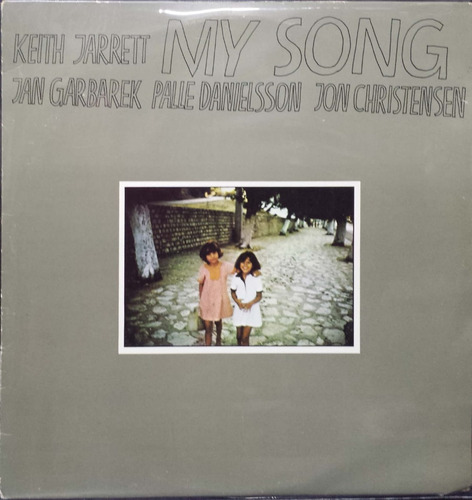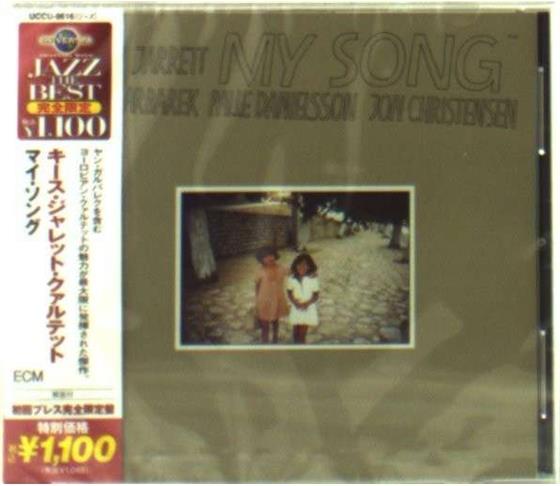

Fluid as his song, his voice basks in the sunshine. After this palpable spurt of energy, “The Journey Home” breathes a sigh of relief and provides the album’s most gorgeous turns from Jarrett. During another rich bass solo, Jarrett plucks the strings inside his piano as if to defuse the epiphany. As Jarrett peaks with intensity, Garbarek arches his back like a sun flare, a whip cracking silently through time-space in slow motion, giving us an aftertaste of the Norwegian reedman at his early best. The colorful scatterings of his solo in “Mandala,” for example, are made all the more so for the fantastic rhythm section backing him every step of the way.

He comes across as nothing less than perfection, sharing in this democratic spread of passion. While his left hand is firmly rooted in the soil of his rhythm section, his right seems to frolic in the rain that nourishes it, changing from liquid to gas and back to liquid in a perpetual cycle of self-renewal. Jarrett cultivates the talents of his fellow musicians in a garden rife with unique hybrids. Garbarek’s pleasing yet incisive tone works wonders and continues to lead the way in “Tabarka,” where nostalgia shares its berth with the dripping shadows of resolution, and which protects the Michael Naura-like buoyancy of “Country” like a dome over Palle Danielsson’s wonderful solo on bass. The gorgeous title track, in which we encounter a slightly mournful but always majestic invocation, widens the music’s embrace. “Questar” opens this set of six Jarrett originals by unfolding a melodic altar for the saxophonic offerings of Jan Garbarek, who trades prime invocations with Jarrett in a formula that pervades the rest of the album to great success. Recorded November 1977 at Talent Studio, Osloįrom the moment we step into the transport of Keith Jarrett’s European quartet, we know we are in for a comforting ride filled with lush scenery and temperate climes. Track listing All compositions by Keith Jarrett.Jan Garbarek tenor and soprano saxophones But if you want to start out with a single track as introduction to the European quartet, this is a very good place to begin." The whole My Song album is essential listening for Jarrett fans, and perhaps came the closest of any Jarrett quartet album to matching the type of musical personality he showed when playing his famous solo piano concerts. The four musicians enter into the inner workings of this music with perfect sympathy and-that great rarity in the jazz world-almost no signs of ego. The star here is Jarrett's composition, which moves through several distinct moods, from a melancholy rubato which leads into a spirited folksy melody with a very danceable beat (one of this composer's most inspired moments) before the piece settles into a slow 9/8 section that could stand on its own as a significant composition. But jazz is not sports, and this band achieved a holistic transcendence that made them an ideal ensemble for realizing Jarrett's compositions of the period. Even today, critics are quicker to praise the looser, more unpredictable American quartet and, certainly, if jazz were sports, you would get fired from the GM job for trading Paul Motian for Jon Christensen, etc. Yet this group-the so-called European quartet-produced some of the most successful music of Jarrett's career, and had a very big seller with the My Song album. "When Keith Jarrett left behind his highly esteemed American quartet for a new band of Norwegians, the jazz world was puzzled and a little bit skeptical. Writing for the now defunct jazz magazine, Ted Gioia rated 99/100 the track The Journey Home stating that:
#Keith jarrett my song full#
Jarrett contributed all six compositions and the results are relaxed and introspective yet full of inner tension.". The AllMusic review by Scott Yanow awarded the album 4.5 stars, stating, "Due to the popularity of the haunting "My Song," this album is the best known of the Jarrett-Garbarek collaborations and it actually is their most rewarding meeting on record.


 0 kommentar(er)
0 kommentar(er)
